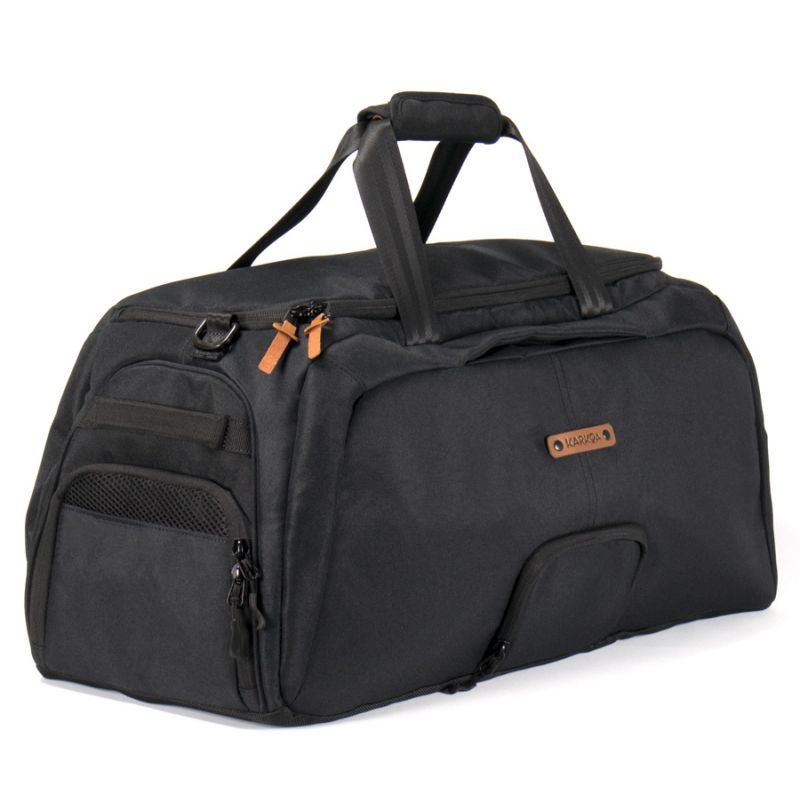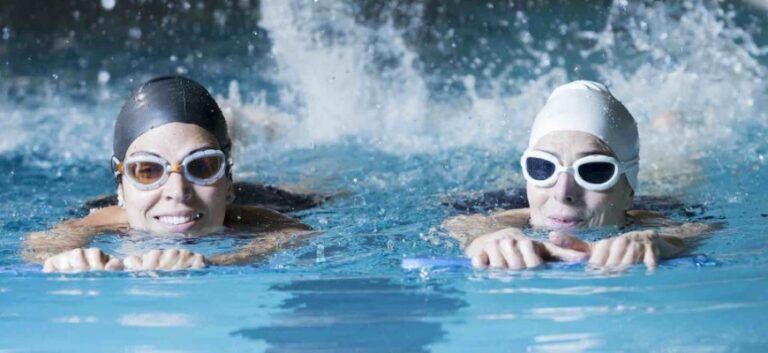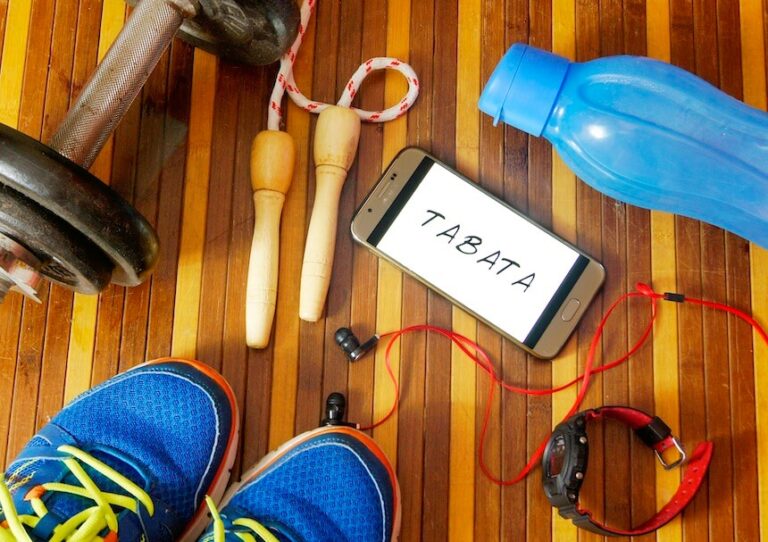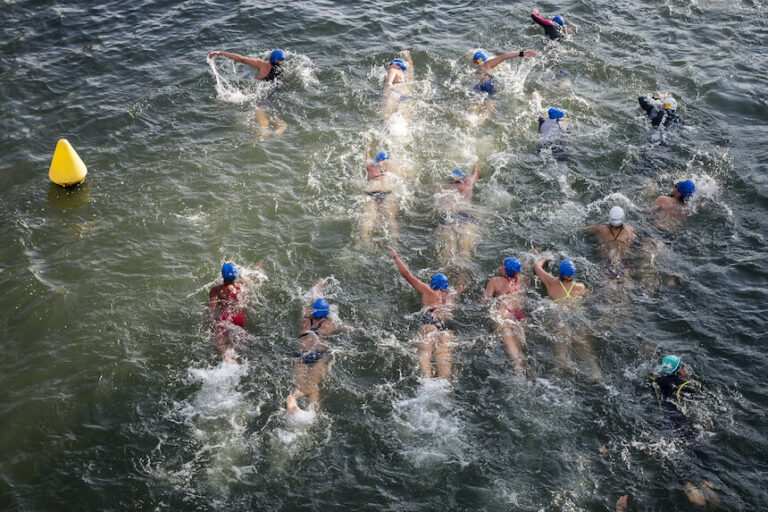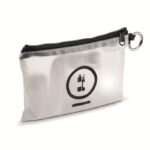Accessible from the age of 6, breaststroke can be learnt on your own, but it’s often best to take at least a few lessons with a lifeguard. That way, you’ll learn the right strokes, which you can then work on alone, at your own pace.
Several types of breaststroke
Even beginners can distinguish between several types of breaststroke.
Breaststroke head above water
Head above water breaststroke is a way of learning to swim by concentrating on arm and leg movements, without worrying about breathing. A ‘leisure’ stroke (it’s common to see swimmers doing breaststroke lengths while chatting), it can nevertheless cause back and neck pain in high doses. Swimming breaststroke with your head out of the water requires you to adopt a posture that can be painful over the long term.
Sinker armature
The sunken breaststroke is practised with the head underwater, as its name suggests. Resistance to the water is much lower than with the head above water, and gliding is greatly improved. When the head is underwater, it is in line with the spine. With less stress on the spine, the sinking breaststroke is not as painful as swimming with your head above water.
Learn the breaststroke movement
When you swim the breaststroke, propulsion comes from the legs, unlike the crawl where it comes from the arms. It is therefore essential to work on the leg movement when swimming the breaststroke. If you don’t do it properly, it will have the opposite effect to the one you want and will slow you down rather than propel you.
The movement of the legs, or scissor movement, takes place in three stages.
- The swimmer folds his legs, bringing his feet close to his buttocks. During this phase, there is no propulsion, in fact quite the opposite.
- Feet pointing outwards, the swimmer spreads his legs outwards and backwards. This is the start of the active propulsion phase.
- With legs straight, the swimmer brings them together until they touch. This is the end of the propulsion phase.
It’s important that steps 2 and 3 follow on from each other quickly so that you have a dynamic propulsion and don’t lose speed in two movements.
Learn how to move your arms in breaststroke
The arms have a secondary role as they are not used for propulsion. They are nevertheless useful for maintaining an efficient position and facilitating breathing.
The movement of the arms is divided into two parts.
- Starting with arms clenched and stretched forward, the swimmer spreads the arms outwards with the palms of the hands also facing outwards.
- The swimmer brings the arms towards the chest and then returns them to their original position, stretched forward.
During the first phase, the arms on the water will allow the swimmer to lift their head out of the water to breathe.
Working on breathing
As with all swimming, breathing is very important. If it is poorly placed or badly controlled, the swimmer will quickly run out of breath and become exhausted.
Breathing in the breaststroke takes place in two stages:
- As soon as the swimmer puts his head in the water, he blows out the air in his lungs through his mouth and nose. The exhalation should be long, continuous and regular. It continues until the arms are stretched forward again. All the air in the lungs must be evacuated, otherwise the inhalation will be less effective and the swimmer will run out of breath.
- At the end of the arm pull, the swimmer takes his or her head out of the water and takes a breath. During this phase, with the head out of the water, resistance is maximum and the swimmer risks losing speed. The inhalation must therefore be very rapid so that you can dive back underwater as quickly as possible. The less air there is in the lungs during inspiration, the faster it will be.
Exercises for swimming breaststroke
To help you learn to swim breaststroke, it is advisable to work on arm and leg movements separately. They will only be combined once the basics have been mastered.
Leg exercises
There are three simple exercises you can do to work on leg movement:
- On your stomach with a plank: Lie on your stomach holding a plank in your hands, arms outstretched, and move forward using only the breaststroke movements of your legs.
- On your back: lying on your back with your arms by your sides, move your legs, trying to keep them underwater.
- With a pull-buoy: swim the breaststroke holding a pull-buoy between your thighs. This prevents your legs from spreading too far apart and gives you an efficient stroke with less resistance.
Arm exercises
- Breaststroke arms and kicking legs: do the breaststroke with your arms and kicking with your legs, as in the front crawl. This allows you to work on your arm movements without having to worry about synchronising them with your leg movements.
- Alert arms/legs/arms: a breaststroke movement with the arms, keeping the legs still, then a breaststroke movement with the arms and legs.
- With a pull-buoy: the pull-buoy is wedged between the thighs and the legs do not move. This makes it easier to float and you can concentrate on moving your arms.
5 things you need to know to learn to swim breaststroke
Mistakes to avoid in breaststroke
When you start swimming the breaststroke, there are certain mistakes to avoid, but many beginners make them. By getting to know them, you can easily correct them before they become bad habits.
- Don’t blow underwater: beginners often take a deep breath before putting their head underwater, don’t blow and are forced to exhale and then inhale in the same movement. There’s no need to be afraid of running out of air. Little by little, swimmers get to know themselves and gain confidence. Breathing out underwater is very important and allows you to breathe in more efficiently, for better performance later on.
- Keeping your head above water: your body is no longer aligned and resistance to forward movement is increased. Swimming breaststroke is more difficult, more tiring, and the risk of injury increases.
- Forcing on your arms: in breaststroke, propulsion is provided by your legs. Straining your arms will only make you more tired.
- Linking movements too quickly: the glide is very important between two movements. If you link movements together too quickly, you don’t take advantage of the glide, you increase the resistance to movement and, ultimately, you get more tired.
- Move your arms and legs at the same time: if you move your arms and inhale at the same time as your legs, you will reduce the efficiency of your propulsion because the resistance will be increased. The leg movement should only be started at the end of the arm movement, when the head goes underwater.
The ideal pool bag
With a Karkoa pool bag, carry all your stuff safely. Its multiple compartments and waterproof pockets make it easy to organise your pool gear and a change of clothes.





